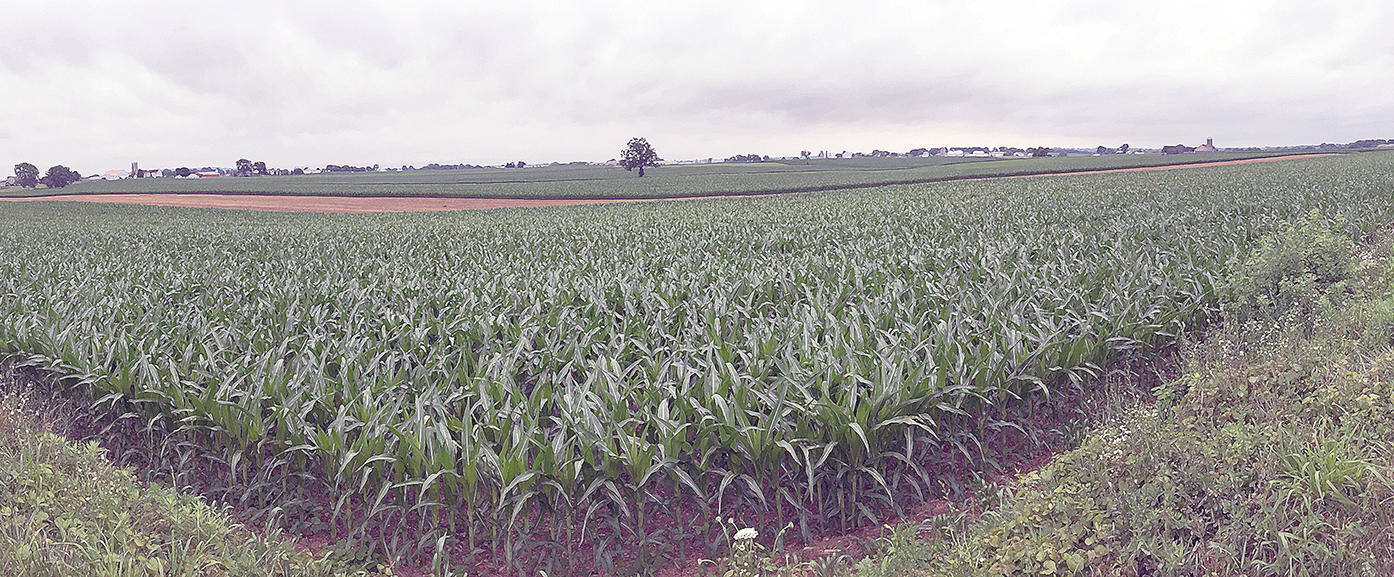
Written by Art Petrosemolo
Yellow or white. It does make a difference. If you live in Idaho, it probably isn’t as important if your summer sweet corn is yellow or white. If it is fresh, cooked properly and not too starchy, it passes.
But here in Lancaster County, in what might be described as the heart of the county for sweet corn, there are those who like yellow, those that like white and some that like it both ways – bi-color.
When I first lived in Lancaster in the 1970s, it was Silver Queen, a late season (white) hybrid that was popular and my neighbors said was the best. Well, I’ve asked all my farmer friends about Silver Queen now that I have returned and they all smile and say that it is no longer a member of the “royal family” and has been replaced by other variety of sweet, white corn like White Magic.
But for years, the name Silver Queen was associated with Lancaster County and asked for by name. I’m not sure I’m asking for “white magic” today. If you look at your farm stand’s corn, it is labeled white, yellow or bi-color and also picked yesterday or today.
I am still having difficulty distinguishing between sweet corn and field corn as I drive by the endless fields of maize.
But Tina and I are bi-color corn fans. I’ll eat yellow or white but only as a second choice. And now with sweet corn in season, I find myself eating two ears at dinner. Tina eats it without any embellishments. I am a butter and salt guy.
So I have a corn story to share but first let’s look at the facts. Sweet corn is a variety of maize with high sugar content. It also is called pole corn. Unlike field corn which is picked when the kernel is dry and mature and used as animal feed, sweet corn is picked with the kernel immature (called the milk stage) and eaten as a vegetable.
Traced back to Native Americans in North America, the first recorded mention by European settlers of corn dates back to 1779.
The top states in sweet corn production are Florida, California, Washington, New York and Georgia. But we all know, the best comes from Lancaster County, PA and is available from early July through September. The early varieties can be ready to eat in as little as 65 days and Eastern Shore, MD corn is usually available here several weeks before local corn is ready to pick.
For a long time, sweet corn only was available during the summer which truly made it special. But today, like any seasonal vegetable with world markets, we get fruits and vegetable from other countries all year long.
A few years ago, I spent an overnight with Charlie Rooney of Sea Bright, NJ who runs a wholesale produce company. We drove to the Philadelphia Produce Market on a winter weeknight, arriving about 8 p.m. It took about four hours for Charlie and his helpers to work with their buyer and fill Charlie’s orders for restaurants on the Jersey Shore.
It all was loaded by midnight and we spent the next four to five hours making deliveries as we returned to Red Bank. I wrote a great story and it was an eye-opening experience to see all the fruits and vegetables at the market in the middle of the winter.
So, here’s my corn story. Tina and I laugh about it almost every time we eat corn. About 1975, close to the end of my tenure at F&M, our neighbors convinced us we had to freeze corn. “It was the best,” they said, “and nice to have corn all winter, yada, yada.” And my neighbor John said he’d help.
A second friend who ran a business fixing sewing machines for Amish families and had lots of friends with farms, arranged for me to get 300 ears from a farmer in Paradise. At the time, I was driving a small, Volkswagen “bug” and arrived at the farm early on a Saturday morning.
The farmer was ready for me but gave the car a funny glance. He said, “You’d better get in the car Art and open the sunroof.” I did that and he proceeded to fill the VW from the top with 300 ears of Silver Queen. It was like being buried in sand at the beach but I was buried in corn up to my armpits.
I got it home and, naturally, it had to be done that weekend. We spent hours with some hand contraption removing the corn from the cob, blanching it, packing into plastic bags and freezing flat. (In case you want to know, there are 1600 kernels, give or take, in a pound of corn.)
Anyway, the corn just about filled our freezer and we ate it as a vegetable, in soup, in corn relish and in every way possible for 10 months. It was good but, to be honest, not worth the work. Way back in my memories now but fun to think about I stop every few days to buy corn to enjoy that evening at one of the hundreds of stands here in the County.